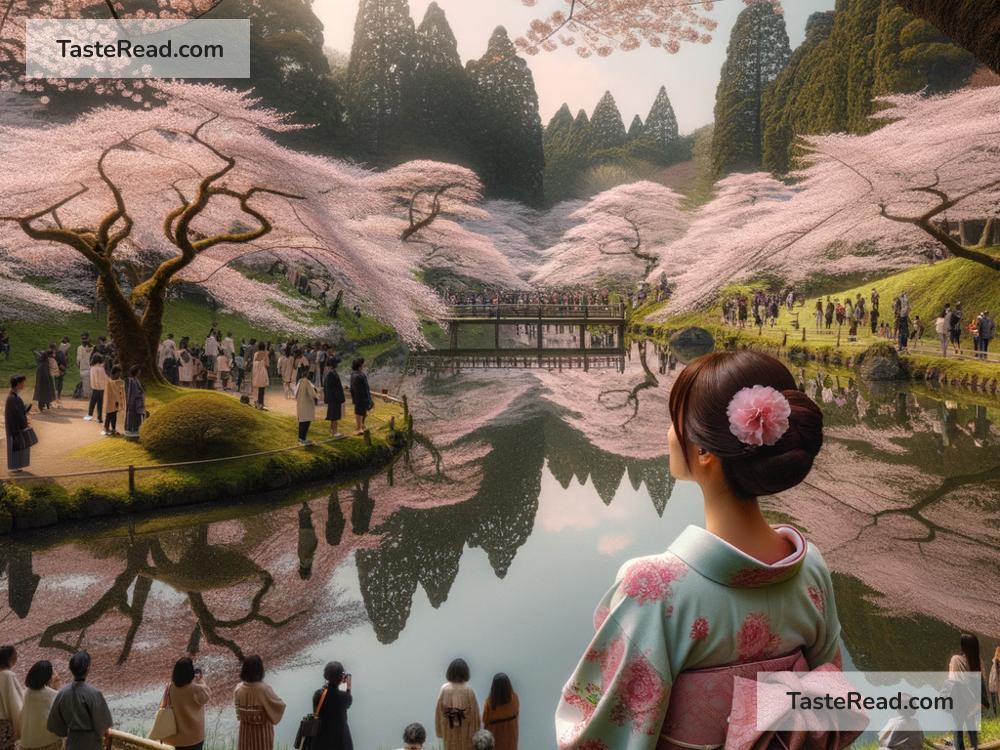The Mystery Behind Cherry Blossoms and Their Symbolism
Cherry blossoms, with their delicate pink and white petals, are among the most beautiful and celebrated flowers in the world. Every spring, these blossoms captivate people across countries with their fleeting beauty. But beyond their stunning appearance, cherry blossoms carry deep symbolism that connects to themes of life, death, love, and the passage of time. Let’s explore the mystery of cherry blossoms and the meanings they hold.
What Are Cherry Blossoms?
Cherry blossoms, known as “sakura” in Japanese, are flowers of cherry trees. They bloom mostly in spring and are famous in countries like Japan, South Korea, China, and the United States. While the blossoms are associated with different cultures, they are most closely linked to Japan, where they hold special significance in tradition, art, and literature. Japanese cherry trees do not bear edible fruit, unlike regular cherry trees you’d find growing cherries for eating. Instead, they exist purely for their beauty.
What makes cherry blossoms unique is their brevity. The flowers bloom for just a couple of weeks before falling gracefully to the ground. This fleeting moment is one of the reasons cherry blossoms have become symbols of profound ideas about life and time.
Symbolism in Japanese Culture
In Japan, cherry blossoms are much more than pretty flowers. For centuries, they have represented the delicate and fleeting nature of life. The blossoms peak in their beauty for a short time, reminding people that life is precious but temporary. This idea connects strongly to Buddhist teachings about impermanence, where everything—good and bad—comes and goes.
Additionally, cherry blossoms symbolize new beginnings. April marks the bloom of sakura in Japan, and it’s also the start of the new school and work year. People gather under cherry trees to enjoy “hanami” (flower viewing), celebrating the beauty of nature and the start of fresh opportunities. However, they also reflect on the inevitability of life’s changes.
Beauty in Imperfection
Another fascinating thing about cherry blossoms is how they embrace impermanence as part of their charm. The flowers bloom all at once, creating breathtaking scenery, but it’s their wilting and falling that often leave the deepest impression. Their short existence teaches us to appreciate the moment and find beauty in imperfection, an idea that aligns with the Japanese philosophy of “wabi-sabi.”
Wabi-sabi celebrates the imperfect and transient aspects of life. Cherry blossoms are a visual reminder to cherish the present, even though it cannot be held forever. Their symbolism helps people stay mindful of the changing seasons and the constant movement of time.
Love and Connection
Cherry blossoms don’t just symbolize life and death; they also represent love and human connections. In literature and poetry, they are often linked to romance. Because the blossoms bloom in groups and fall together, they signify unity and shared experiences.
When two people sit under a cherry blossom tree to watch the petals fall, they aren’t just admiring nature—they’re also creating memories that will stick with them even after the flowers are gone. For this reason, sakura often reminds people to savor their relationships while they last and to keep those connections alive in their hearts.
Cherry Blossoms in Times of War
Interestingly, cherry blossoms have also carried darker meanings in history. During World War II, Japanese soldiers would often associate the blossoms with sacrifice. Falling petals symbolized their willingness to give their lives for their country. The flower became tied to patriotism, though today it is celebrated more for its beauty and positive symbolism than as a political symbol.
Cherry Blossoms Around the World
While cherry blossoms are most famous in Japan, they are celebrated globally as well. In Washington, D.C., thousands of cherry trees bloom every spring, drawing visitors from all over. These trees were a gift from Japan to the United States in 1912 to symbolize friendship between the two nations.
South Korea also has cherry blossom festivals that attract tourists each year, and the flowers have been a source of joy and inspiration in Chinese culture for centuries. No matter where they bloom, cherry blossoms carry universal messages of beauty, renewal, and the importance of cherishing fleeting moments.
Why Do People Love Cherry Blossoms So Much?
One reason people love cherry blossoms is their ability to make us stop and appreciate the world. In our busy lives, it’s easy to overlook the little miracles around us. But when cherry blossoms bloom, they demand attention—not because they last forever, but because their time is so short. They teach us to slow down, enjoy the present moment, and find joy in life’s small wonders.
The visual impact of cherry blossoms, combined with their deep symbolism, creates an emotional connection for people of all ages. Whether it’s through art, poetry, festivals, or simple admiration of their beauty, cherry blossoms remind us of the fragile yet stunning journey of life.
Conclusion
Cherry blossoms are more than gorgeous flowers. They are symbols of life’s impermanence, beauty, and the connections we share with others. Year after year, their bloom gives us a chance to reflect on the passage of time, appreciate the moment, and celebrate new beginnings. Whether you experience them in Japan, the United States, or anywhere else in the world, cherry blossoms leave a lasting impression that is difficult to forget.
The next time you see cherry blossoms, take a moment to admire their mystery and think about the stories they tell. Their beauty may be fleeting, but their symbolism lasts forever.


